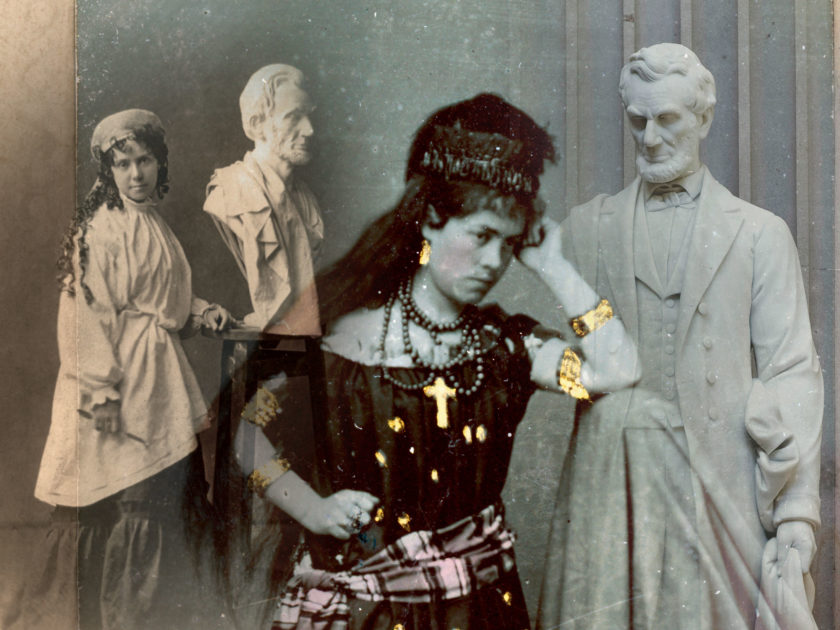An insatiable demand for memorials honoring the sacrifice of a generation swept the country for decades after the Civil War. Each memorial involved formal dedication ceremonies with all the pomp and circumstance befitting the occasion.

One of the most anticipated of these events occurred with the unveiling of a full-length statue of Abraham Lincoln in the U.S. Capitol rotunda.
Descriptions of the artist that sculpted the figure and detailed accounts of events leading up to the unveiling sprawled across the front pages of newspapers in January 1871. The artist, Wisconsin’s Lavinia Ellen “Vinnie” Ream, had burst upon the Washington, D.C., art scene in 1863, when she became an apprentice to renowned sculptor Clark Mills. Her natural gifts as an artist, innate charisma and genius for self-promotion landed her a monumental commission less than a year into her career—a bust of President Lincoln for which he sat in 1864.
The bust became her winning entry into the competition for the Capitol commission, which she received in 1866. She became the youngest recipient, at just 18 years old, and the first woman to receive a federal government commission as an artist.
Ream traveled to Rome with her Lincoln bust to execute the commission. This unpublished tintype may have been made during her Italian sojourn, believes owner Mahlon Nichols.
She returned to America with the completed work, which attracted immediate media buzz. On Jan. 5, 1871, in Washington, Ream and several of her friends opened the crate containing the statue and found much to their relief that it made the voyage from Europe intact. Meanwhile, curious onlookers gathered as preparations began for the placement of the statue on its pedestal.
Two days later, with the statue successfully mounted, a delegation gathered for an official inspection. About 100 individuals, led by Secretary of the Interior Columbus Delano, and including Ream and friends, looked on as workmen removed boards to reveal a veil through which the contours of the statue were visible. As the workers slowly raised the shroud the crowd watched in silence as the pedestal came into view, and then the body and finally the familiar face.

A journalist on the scene reported the reaction: “There was a momentary hush, and then an involuntary, warm, and universal demonstration of applause gave the verdict of the distinguished and critical gathering, and assured the artist that her work was to be set down a success. There was another pause, while a more deliberate view was taken, and then another, and another round of applause confirmed and rendered final the involuntary decision from the first impression. And then everybody turned to where the little sculptor-girl stood, a little in the rear with glad tears in her eyes, and congratulations were poured in upon from all quarters.”
Ream’s masterwork received the same response from the public during official ceremonies on January 25. The statue remained Ream’s most celebrated work until her death in 1914. And it remains so today.
SPREAD THE WORD: We encourage you to share this story on social media and elsewhere to educate and raise awareness. If you wish to use any image on this page for another purpose, please request permission.
LEARN MORE about Military Images, America’s only magazine dedicated to showcasing, interpreting and preserving Civil War portrait photography.
VISIT OUR STORE to subscribe, renew a subscription, and more.

